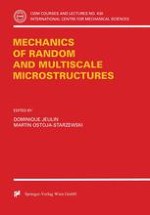This book reviews recent theoretical, computational and experimental developments in mechanics of random and multiscale solid materials. The aim is to provide tools for better understanding and prediction of the effects of stochastic (non-periodic) microstructures on materials’ mesoscopic and macroscopic properties. Particular topics involve a review of experimental techniques for the microstructure description, a survey of key methods of probability theory applied to the description and representation of microstructures by random modes, static and dynamic elasticity and non-linear problems in random media via variational principles, stochastic wave propagation, Monte Carlo simulation of random continuous and discrete media, fracture statistics models, and computational micromechanics.
